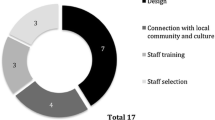Abstract
This study explores Korean-immigrant parents’ language ideologies and practices with respect to their American-born children’s language development. Participants were seven ethnic Korean families composed of immigrant parents and their American-born children, aged between five and seven, in Midwestern America. Interviews in the medium of Korean with the parents, and naturally-occurring family conversations during a meal time, reading time, and play time were audio-recorded and analyzed. The findings suggest that Korean-immigrant parents have a strong desire to pass on their mother tongue to their American-born children, largely derived from their language barrier, and perception of language as an identity marker and socio-economic capital in case they return to Korea for familial obligations and economic opportunities, which represent the context-specific nature of family language policy. Language strategies, such as parental feedback and language-mixing, serve as a catalyst for the implementation of family language policy on the levels of functions, forms, and teaching of the Korean language for Korean-American children’s bilingual development.
Similar content being viewed by others
References
Blum-Kulka, S. (1997). Dinner talk: Cultural patterns of sociability and socialization in family discourse. Mahwah, NJ: Lawrence Erlbaum.
Cho, G. (2000). The role of heritage language in social interactions and relationships: Reflections from a language minority group. Bilingual Research Journal, 24(4), 333–348.
Cooper, R. L. (1989). Language planning and social change. New York, NY: Cambridge University Press.
Curdt-Christiansen, X. L. (2009). Invisible and visible language planning: Ideological factors in the family language policy of Chinese immigrant families in Québec. Language Policy, 8, 351–375.
De Houwer, A. (2007). Parental language input patterns and children’s bilingual use. Applied Psycholinguistics, 28(3), 411–424.
Duursman, E., Romero-Contreas, S., Szuber, A., Proctor, P., Snow, C. E., August, D., et al. (2007). The role of home literacy and language environment on bilinguals’ English and Spanish vocabulary development. Applied Psycholinguistics, 28(1), 171–190.
Gumperz, J. (1981). Discourse strategies. New York, NY: Cambridge University Press.
Kasuya, H. (1998). Determinants of language choice in bilingual children: The role of input. International Journal of Bilingualism, 2(3), 327–346.
Kim, J. (2011). Korean immigrant mothers’ perspectives: The meanings of a Korean heritage language school for their children’s American early schooling experiences. Early Childhood Education Journal, 39, 133–141.
King, K., & Fogle, L. (2006). Bilingual parenting as good parenting: Parents’ perspectives on family language policy for additive bilingualism. International Journal of Bilingual Education and Bilingualism, 9(6), 695–712.
King, K. A., Fogle, L., & Logan-Terry, A. (2008). Family language policy. Language and Linguistics Compass, 2(5), 907–922.
Lee, J. S. (2002). The Korean language in America: The role of cultural identity and heritage language. Language, Culture and Curriculum, 15(2), 117–133.
Lee, J., & Kim, D. (2010). Brain gain or brain circulation? U.S. doctoral recipients returning to South Korea. Higher Education, 59(5), 627–643.
Lee, J. S., & Shin, S. (2008). Korean heritage language education in the United States: The current state, opportunities and possibilities. Heritage Language Journal, 6(1) Retrieved from http://hlj.ucla.edu/ViewPaper.ashx?ID=X5aWPU2Aj8nVf2XLAk2G7w%3d%3d.
Montrul, S. (2010). Current issues in heritage language acquisition. Annual Review of Applied Linguistics, 30, 2–23.
Pan, B. A. (1995). Code negotiation in bilingual families: “My body starts speaking English”. Journal of Multilingual and Multicultural Development, 16, 315–327.
Sohn, S., & Wang, X. C. (2006). Immigrant parents’ involvement in American schools: Perspectives from Korean mothers. Early Childhood Education Journal, 34(2), 125–132.
Strauss, A., & Corbin, J. (1998). Basics of qualitative research: Techniques and procedures for developing grounded theory. Thousand Oaks, CA: Sage.
Tuominin, A. K. (1999). Who decides the home language? A look at multilingual families. International Journal of the Sociology of Language, 140, 59–76.
Author information
Authors and Affiliations
Corresponding author
Rights and permissions
About this article
Cite this article
Kang, HS. Korean-Immigrant Parents’ Support of Their American-Born Children’s Development and Maintenance of the Home Language. Early Childhood Educ J 41, 431–438 (2013). https://doi.org/10.1007/s10643-012-0566-1
Published:
Issue Date:
DOI: https://doi.org/10.1007/s10643-012-0566-1




